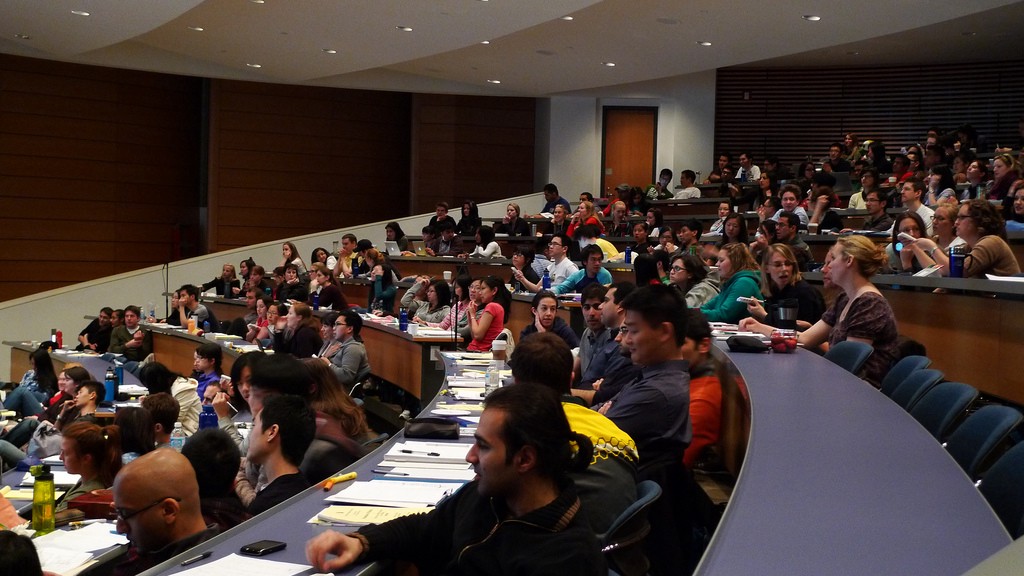The Realities of the Student-Debt Crisis

New Yorker staff writer Nicholas Lemann writes this week that discussions about the student debt crisis often assumes that students are acquiring their massive debt loads by going to expensive private liberal-arts schools, but the reality is that much of the student-debt crisis is occurring at for-profit colleges:
In fact, the main drivers of student debt — which has recently risen to the attention-getting sum of a trillion dollars — are the rapid growth of for-profit, mostly online education institutions, where ninety per cent of students take on debt, completion rates are low, and default rates are high; substantial cuts by state legislatures in their support for public universities; and the stubborn fact that, for most people, going to college continues to pay off economically, effectively doubling lifetime earnings.
There’s no doubt that for-profit colleges have played a significant role in the student debt crisis, and investigations like the 2012 Harkin Report have done much to expose this. But what about those very good nonprofit colleges many of us have attended? Lemann:
Meanwhile, the most expensive and prestigious nonprofit colleges — numerically few, but large in mindshare — are experiencing a kind of cognitive dissonance around cost and debt. A handful of the three thousand bachelor’s-degree-granting institutions in the United States are rich enough to maintain a no-debt policy for the students they choose to admit. The next-richest couple of hundred have been raising their prices at a rate higher than inflation, and their students’ debt has been rising, too, though not to anywhere near the crushing level that the rhetoric around the issue implies. The average student who borrows to attend college graduates with just under thirty thousand dollars in debt (at private nonprofit colleges, it’s thirty-two thousand three hundred dollars) — a daunting burden for a twenty-two-year-old, though it’s still only a little more than the average amount of a car loan.
So Lemann (who, by the way, was the dean of my graduate program when I was at Columbia), is arguing that it’s not that bad at nonprofit colleges, and then later that the “vast majority of Americans” are actually attending “low-cost” institutions like community colleges. This is a fair argument, though it is unfair to compare a $30,000 student loan debt-load to a $30,000 car loan. The average car loan carries an interest rate of 4.5 percent and can go even lower for a borrower with good credit. Student loan interest rates vary wildly depending on whether you’ve taken on federal or private loans. If a car loan borrower can no longer make payments, their debt can be discharged or renegotiated in bankruptcy. Student loan borrowers are stuck with their debt.
He also sidesteps another argument that’s made when we talk bout the student loan crisis, that economic forces have caused tuition rates to skyrocket even after adjusting for inflation. I’ve written about how tuition rates at the public state university I attended as an undergrad tripled in a single decade.
And don’t blame fancy amenities and bloated administrations for this, Lemann argues (aside: Now that I think about it, I am recalling a “generous” gift from an alum given to the graduate school I attended while Lemann was dean that was used not for scholarships or updated facilities or new faculty hires, but for the erection of a giant alumni wall that would display the names of all the graduates who attended the school in the last 100 years).
Of course, student debt loads vary depending on where you went to school (and when!), and it is easy to point to the cesspool that is the for-profit college scam to explain why the student debt crisis is what it is today. But shifting the blame like this so effortlessly ignores the creeping student debt problem happening at the kinds of four-year public and private institutions that many young people dream about attending, and then later take out loans to do so. Recognizing these problems encourages lawmakers to do something about it.
Photo: velkr0
Support The Billfold
The Billfold continues to exist thanks to support from our readers. Help us continue to do our work by making a monthly pledge on Patreon or a one-time-only contribution through PayPal.
Comments